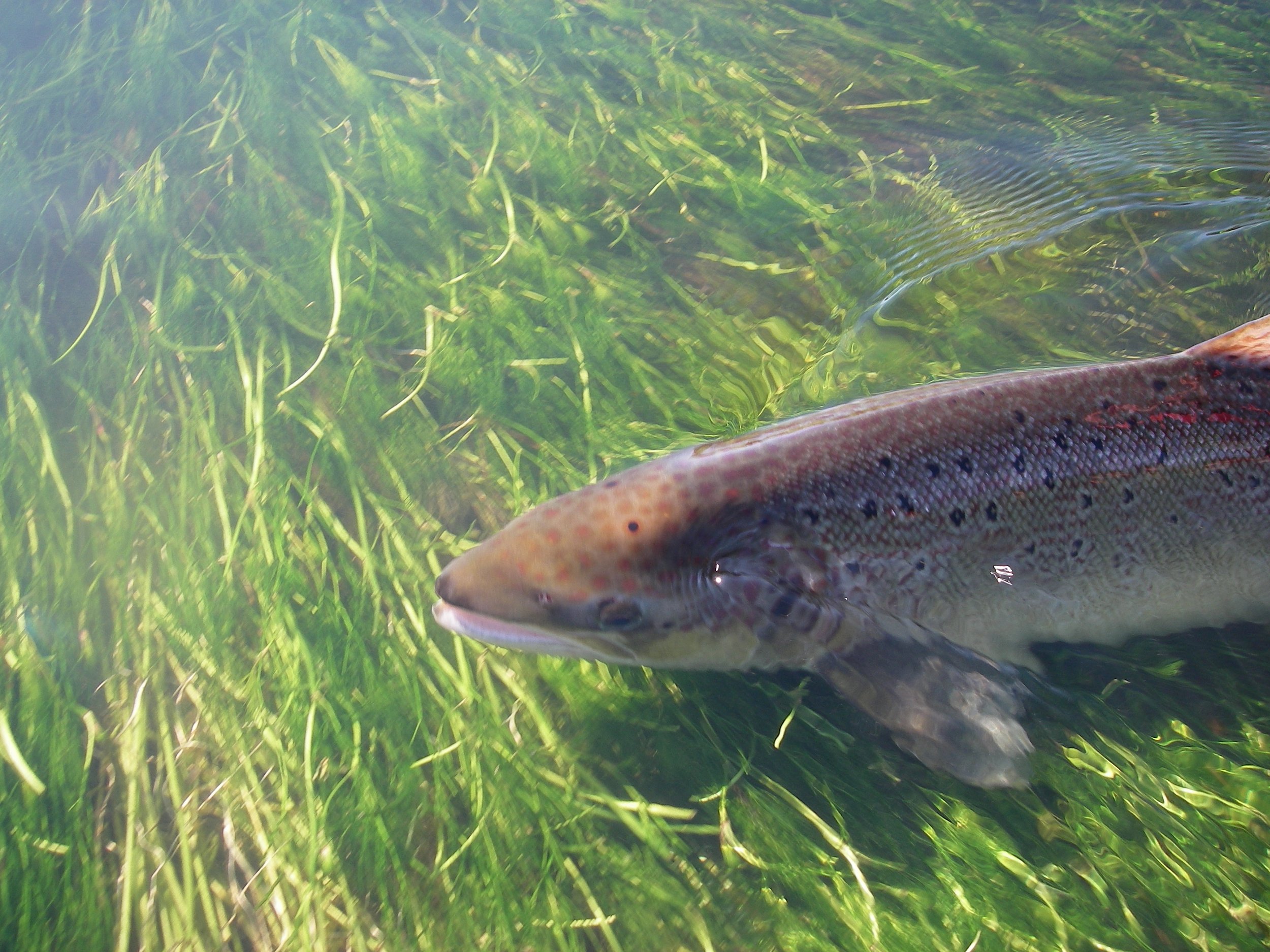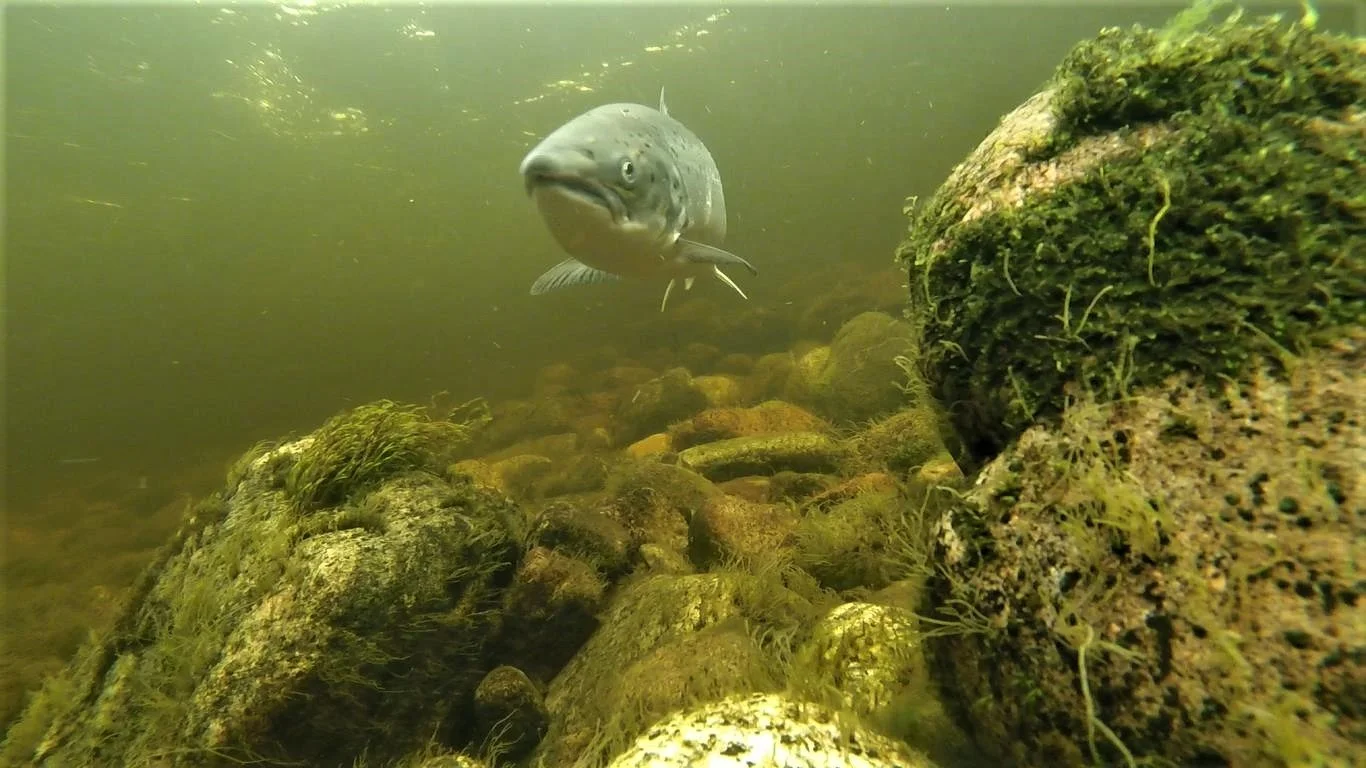Salmonid conservation – the Need for Marine and Freshwater Approaches
Last month, MSA member the Game & Wildlife Conservation Trust (GWCT) met with an all-party parliamentary group to directly discuss the need for marine and freshwater approaches.
Dylan Roberts, head of fisheries at the GWCT, presented first giving some background in the importance of the Atlantic salmon as both an indicator of a health well-managed ecosystem and a valued commercial and recreational resource. He then went on to explain that the Atlantic Salmon has experienced significant declines and that the GWCT’s work on the River Frome in Dorset is part of a network of salmon index rivers attempting to identify the causes of these declines and to find solutions to problems in their freshwater environment.
Image: GWCT
There are several factors affecting freshwater quality which in turn is impacting on salmon stocks, namely: climate change reducing flows and causing floods as well as warming up rivers; barriers to migration such as dams; predation; and, most significantly, water pollution due to nutrient and sediment runoff from agriculture and water companies. Water pollution can impact on instream vegetation which is crucial for salmonid breeding success. As a result of reduced freshwater quality, juvenile salmon smolts are smaller in size when they leave the river for the sea, and this is exacerbating marine mortality.
There are also issues with growth at sea particularly during the first summer resulting in smaller adult fish returning to the natal river, resulting in fewer eggs being spawned per fish. Sediment also affects egg survival; there is only a 5-10% survival rate on a lowland river badly effected by sediment compared with 65-70% survival in a clean upland stream with little arable production. Therefore, to conserve our salmon we need to improve water quality and reduce sediment losses and their associated nutrients into rivers.
Dylan put forward some suggestions as to how policy could address these concerns. Whilst there have been measures introduced to mitigate against agricultural runoff and water companies are required to minimise storm outflows, the current regulatory framework is poorly enforced. It is vital therefore that more resources are directed to monitoring farm and water company discharges and that breaches of regulations are followed by successful prosecutions such as repeat fines with the monies going to restoration. He suggested that a feasibility study should be undertaken on centralising the collection, storage and recycling of farm slurry, manure and chicken waste. The resulting byproducts could potentially be used to produce gas for energy and cheaper fertilizers back to farms. This would go a long way to solving the issue of animal waste pollution in rivers in diary and chicken producing areas such as on the Wye.
In addition, there is little in the way of advice available for farmers to understand what measures are needed and where. This would be greatly aided by a permitting scheme based on a risk assessment that identified nutrient and sediment pathways, with government support available through mandatory sediment traps at the identified key points or changing gate entrances into fields, only then can landowners plough fields. Such a scheme should cover all potential sources of pollution including road drains.
Such measures would address water quality and the freshwater aquatic environment in totality. To specifically address salmonid conservation additional measures such as a review and simplify the rules around the removal of barriers to migration, a more balanced approach to managing predation given that the conservation status of the predators is better than that of salmon and, importantly, a combined approach to conservation that addresses both the freshwater and marine environment as the salmon’s lifecycle, along with other diadromous species, is related to conditions in both.
Image: A tide fresh Atlantic salmon migrating to its spawning grounds, Chris Conroy
Dr Sophie Elliott then presented on the threats facing salmonids in the marine environment. She began by emphasising that whilst lots is known about the freshwater stages of diadromous species, little is known about the marine stage which can be anything from 1 year (Atlantic Salmon) to 10 years (sturgeon). This is because monitoring at sea is poor, affected by few vessels supplying data which are mainly fishing for demersal species and so fishing at a different depth and under-reporting. This is further exacerbated by miss-identification. In addition, the International Council for Exploration of the Sea (ICES) Working Group on Bycatch of Protected Species (WGBYC) who are tasked with assessing bycatch of Protected Endangered and Threatened Species (PETS) does not include Atlantic salmon or European eel as it considers these should be assessed by their own working groups (WGNAS and WGEEL) who do not have access to the bycatch information. Consequently, there is no UK bycatch risk assessment for these species.
Finally, the Marine Management Organisation (MMO) statistics are based on data from larger vessels (>10m long) with little information from the small vessels (>80% UK fleet). Global Fishing Watch data is available, but this data is unable to distinguish between gear types (i.e. pelagic versus demersal trawlers) and vessels <12m well. This is significant, as most bycatch occurs from gillnetting and pelagic (trawlers) vessels and most gillnetters are <10m. Some fine-scale vessel monitoring data (IVMS) is owned by Defra to monitor gillnetting, but the 0-5m minimum depth bylaw prohibition is ineffective.
Research has shown that early mornings and during the day salmonids can dive to depths of up to 60m. Given this context, Sophie put forward suggestions about how the marine environment could contribute to salmonid conservation.
Firstly, diadromous fish need to be recognised as both a freshwater and marine species to ensure that they are accounted for in marine management plans including Marine Protected Areas (MPA). It should be noted that Atlantic Salmon are a Special Areas of Conservation (SAC) species so at-sea protection measures could be put in place as is being undertaken in Europe. Secondly, further resources should be directed to fish-tracking studies so that actions can be targeted. Thirdly, to make the connection between the freshwater and marine environments, MPAs should connect to the natal rivers so that gillnetting could be further avoided in the estuarian and surrounding areas of the natal rivers. Finally, at sea, there should be further scaling up of the onboard observations and onshore monitoring so that a diadromous fish bycatch risk
assessment can be undertaken.
As an Alliance of six organisations, we will build on the existing work of our partners and maximise our impact by taking a coordinated approach and vital action in order to halt and reverse the decline of wild Atlantic salmon.
The goal of the Missing Salmon Alliance is to build an evidence-base to influence national and international decision-makers to regulate activities that adversely impact wild Atlantic salmon.
The Missing Salmon Alliance
The MSA is comprised of the following members:
Game & Wildlife Conservation Trust, Atlantic Salmon Trust, the Angling Trust with Fish Legal, The Rivers Trust and Fisheries Management Scotland.
https://www.missingsalmonalliance.org



